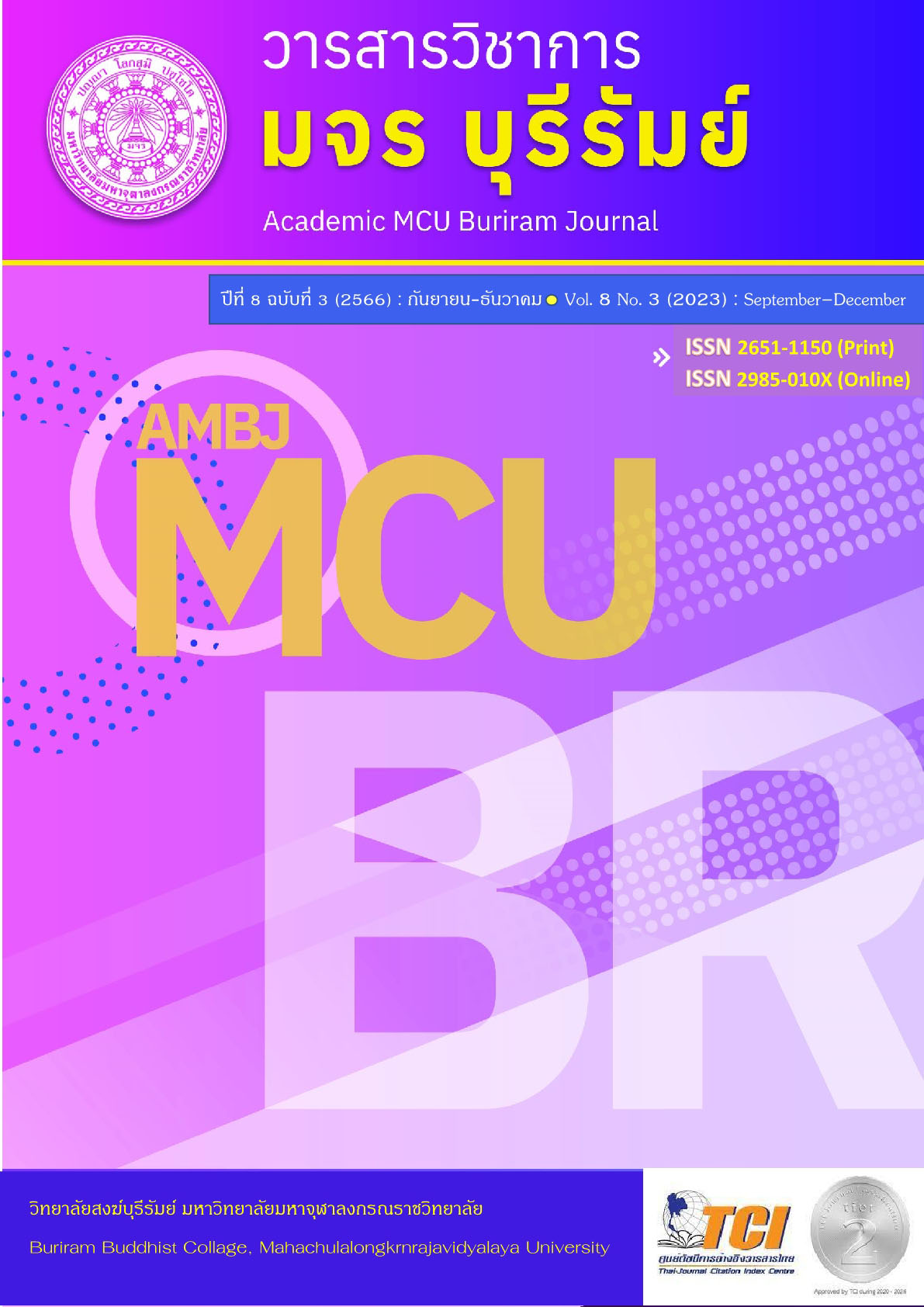The Development of Mathematical Skills and Processes Learning Unit Greatest Common Divisor and Least Common Multiple of Grade 6 Students Using Polya’s Problem-Solving Process with Think-Pair-Share Techniqe
Keywords:
Development of Mathematical Skills and Process Learning, Polya's Problem-Solving Process, Think-Pair-Share TechniqueAbstract
The purposes of this research were: 1) to compare mathematical skills and processes in learning units greatest common divisor and least common multiple of students using Polya's problem-solving process with Think-Pair-Share Technique 2) compare mathematical skills and processes in learning units greatest common divisor and least common multiple of students using Polya's problem-solving process together with Think-Pair-Share Technique with the 60 percent criterion and 3) to study the satisfaction in learning mathematics of students using Polya's problem-solving process with Think-Pair-Share Technique. The sample was cluster randomly assigned to a group of 28 students of Grade 6 students in Nikhompattanasaitho 11 school, Ban Kruat district, Burirum province in the first semester of 2023 academic year. The instruments were the 8 lessons with suitability at a high level ( = 4.39), a mathematics learning test with consistency index value of 0.60 – 1.00, and questionnaire on the satisfaction with reliability of 0.89. The statistical procedures used for data analysis were arithmetic mean, percentage, standard deviation, t-test dependent group and one-sample.
The research results found that:
1. Mathematics skills and processes learning unit greatest common divisor and least common multiple of students by Using Polya’s Problem-Solving Process with Think-Pair-Share Technique was significantly higher than the one before learning at the .05 level of significance.
2. Mathematics skills and processes learning unit greatest common divisor and least common multiple of students by Using Polya’s Problem-Solving Process with Think-Pair-Share Technique, in term of percentage was 75.97 which was higher than the 60 percent of the criterion.
3. Satisfaction of students after learning with Polya's problem-solving process combined with Think-Pair-Share Technique was at a good level.
References
กระทรวงศึกษาธิการ. (2551). หลักสูตรแกนกลางการศึกษาขั้นฐาน พุทธศักราช 2551. กรุงเทพฯ: ชุมนุมสหกรณ์การเกษตรแห่งประเทศไทย.
กฤษณา ทองเกิด และสมจิตรา เรืองศรี. (2563). การพัฒนาผลสัมฤทธิ์ทางการเรียนคณิตศาสตร์ ของนักเรียนชั้นประถมศึกษาปีที่ 6 เรื่องการแก้โจทย์ปัญหาวงกลม ตามขั้นตอนของโพลยาร่วมกับ เทคนิคเพื่อนคู่คิด (Think Pair Share). วารสารมหาวิทยาลัยรามคำแหง, 4(2), 23-37.
ผกาวดี จันทร์วัฒนพงษ์. (2565). การจัดการเรียนรู้โดยใช้บทเรียนคณิตศาสตร์ เรื่อง เศษส่วนและทศนิยมด้วยรูปแบบการจัดการเรียนรู้ SSCS ร่วมกับเทคนิคเพื่อนคู่คิด สำหรับนักเรียนชั้นประถมศึกษาปีที่ 5. การประชุมวิชาการระดับชาติด้านวิทยาศาสตร์และเทคโนโลยีเครือข่ายสถาบันอุดมศึกษาภาคใต้ ครั้งที่ 7. มหาวิทยาลัยราชภัฎสุราษฎร์ธานี.
วรางคณา สำอางค์, พรชัย ทองเจือ และผ่องลักษม์ จิตต์การุญ. (2560). การพัฒนาความสามารถในการแก้โจทย์ปัญหาคณิตศาสตร์ของนักเรียนชั้นประถมศึกษาปีที่ 6 การเรียนรู้ตามแนวคิดของโพลยา.วารสารมนุษยศาสตร์และสังคมศาสตร์ บัณฑิตวิทยาลัย มหาวิทยาลัยราชภัฏพิบูลสงคราม, 11(1), 52-61.
วีนัส ชาลี. (2562). แนวปฏิบัติที่ดีในการจัดการเรียนรู้โดยใช้กระบวนการแก้โจทย์ปัญหาของโพลยาและผลที่มีต่อความสามารถในการแก้โจทย์ปัญหาทางฟิสิกส์ของนักเรียนชั้นมัธยมศึกษาปีที่ 4. ปริญญานิพนธ์การศึกษามหาบัณฑิต สาขาวิชาวิทยาศาสตร์ศึกษา. มหาวิทยาลัยศรีนครินทรวิโรฒ
สถาบันทดสอบทางการศึกษาแห่งชาติ. (2566). ประกาศผล O-NET ปี 2565. เข้าถึงได้จาก http://www.newonetresult.niets.or.th/AnnouncementWeb/ (สืบค้นเมื่อ 27 เมษายน 2566).
สุดารัตน์ คงวิเชียร. (2563). การพัฒนาทักษะและกระบวนการทางคณิตศาสตร์ เรื่อง พื้นที่ผิวและปริมาตร โดยการจัดการเรียนรู้ด้วยกระบวนการคิดเชิงออกแบบ สำหรับนักเรียนชั้นมัธยมศึกษาปีที่ 3. วารสารศึกษาศาสตร์ มหาวิทยาลัยศิลปากร, 19(2), 497-513.
อุไรวรรณ ปานทโชติ. (2560). การพัฒนากิจกรรมการเรียนรู้ที่ส่งเสริมความสามารถในการแก้ปัญหาทางคณิตศาสตร์ ตามขั้นตอนของโพลยาร่วมกับเทคนิคเพื่อนคู่คิด. วารสารคณิตศาสตร์, 3(5), 1-6.
Byerley, R.A. (2002). Using Multimedia and Active Learning Techniques to Energizr: An Introductory Engineering Thermodynamics Class. Frontiers in Education Conference.
National Council of Teachers of Mathematics. (1989). Curriculum and Evaluation Standards for School Mathematics. Retrieved from
http://www.nctm.org/about/related.htm (Accessed 2 February 2023).
Polya, G. (1957). How to Solve It. A New Aspect of Mathematical Method. 2nd Edition, Princeton University Press, Princeton.
Downloads
Published
How to Cite
Issue
Section
License
Copyright (c) 2023 Academic MCU Buriram Journal

This work is licensed under a Creative Commons Attribution-NonCommercial-NoDerivatives 4.0 International License.
ทัศนะและความคิดเห็นที่ปรากฏในบทความวารสารฉบับนี้ถือเป็นความรับผิดชอบของผู้เขียนบทความนั้น ไม่ถือเป็นทัศนะและความรับผิดชอบของบรรณาธิการ





